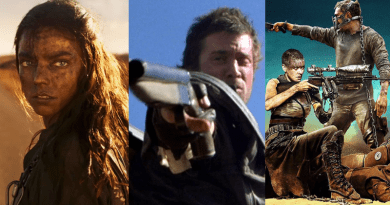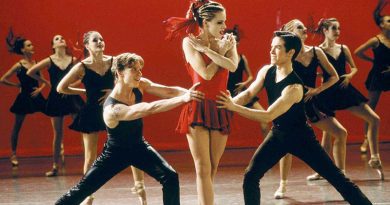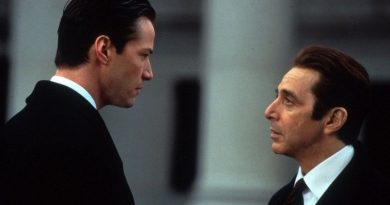Starship Troopers at 25: A Large-Scale Gorefest of Sci-Fi Satire
Paul Verhoeven was on a roll between 1987 and 1992, scoring triple consecutive hits with RoboCop (1987), Total Recall (1990) and Basic Instinct (1992). Then came Showgirls, the (then) big-budget NC-17 sleazefest that bombed big-time at the box office when it opened back in 1995. His once-promising career in Hollywood nosedived ever since, with his last two American movies including Starship Troopers (1997) and Hollow Man (2000) didn’t quite re-capture the magic of his first three aforementioned movies.
But let’s talk about Starship Troopers, which celebrates its 25th anniversary on November 7. The big-budget sci-fi action thriller, which reportedly US$100 million to make, seems like a potential hit-in-the-making. Not only it was Verhoeven’s long-awaited comeback to his familiar sci-fi genre — something that he has executed pretty well in RoboCop and Total Recall. He even reunited with some of his notable RoboCop crew members including screenwriter Ed Neumeier, cinematographer Jost Vacano and composer Basil Poledouris.
With such a talented crew behind the scenes, what could possibly go wrong? And besides, Verhoeven and Neumeier even go as far as replicating the RoboCop formula by incorporating an ultra-violent sci-fi action thriller with pitch-black satire. This is exactly what I have in mind when I first saw Starship Troopers back in 1997: A RoboCop-style of narrative approach but instead of the titular cyborg cop fighting crime, it was a group of young soldiers waging a war against the big bugs. The story itself — adapted from Robert A. Heinlein’s 1959 novel of the same name — is actually straightforward.
To refresh your memory, the movie takes place in a distant future — 23rd century, to be exact — where Earth is now ruled under the command of a fascist military organisation called the United Citizen Federation. We learn there are two types of people including “citizens”, which refers to those who join the Federal Service while “civilians” are the complete opposite. Unlike citizens, civilians are stripped from many human rights and privileges like being unable to gain access to free education and the right to vote. The movie pretty much focuses on a certain group of people, notably a high schooler named Johnny Rico (Casper Van Dien) as well as his girlfriend Carmen Ibanez (Denise Richards), his classmate Dizzy Flores (Dina Meyer) and psychic friend Carl Jenkins (Neil Patrick Harris).
Following their graduation, they pursue their own dreams such as Johnny decides to join the Federal Service to become a mobile infantryman while Carmen has been longing to fulfil her ambition as a pilot. Dizzy, in the meantime, only cares about joining Johnny in his squad wherever he goes because she has been harbouring a crush on him for a long time.
Johnny is doing well at first throughout his training sessions until a fatal mistake resulted in severe punishment and later, prompted him to resign from the Federal Service. But after learning about his homeland of Buenos Aires being wiped out by an asteroid from the planet Klendathu and killed millions of people including his parents (Christopher Curry and Lenore Kasdorf), Johnny decided to convince his superior to let him rejoin the Federal Service.
When Starship Troopers made its debut on November 7, 1997, it headed straight to No. 1 with US$22 million during the first 3-day opening weekend. But it barely made money at the end of its theatrical run, earning only US$54.8 million with a combined worldwide total of US$121 million. Considering the movie costs a US$100 million budget, such a total figure was a financial disappointment. Personally, I didn’t really like it when I first watched the movie in 1997. Verhoeven’s attempt to mesh the sci-fi genre with satire on pro-military and fascism isn’t as effective as I thought it would accomplish successfully. It sure feels like a pale shadow of what RoboCop did better the first time around and even the Paul Verhoeven-less underrated 1990 sequel got it right with its sharp social satire.
Verhoeven and Neumeier also include a mix of high-school melodrama and the love triangle between Rico, Carmen and Dizzy during the first half of the movie. The latter would have worked if the story actually spent time developing this angle rather than just presenting it in the utmost superficial manner.
Another problem that caused Starship Troopers to flop at the box office is the lack of heart and soul to make us root for the character(s). Even in a sci-fi action film as graphically violent as RoboCop, the titular cyborg character played by Peter Weller is given an engaging, yet sympathising character arc that brings a sense of humanity. But in the case of Starship Troopers, the predominantly young stars that include Casper Van Dien, Dina Meyer, Denise Richards and others are either too wooden or corny for their own good. Except for Michael Ironside, who made quite a lasting impression playing the never-say-die squad leader, Jean Rasczak.
Still, Starship Troopers remains a triumph in its technical achievement. It was a US$100 million budget well-spent as Verhoeven and his special effects team led by the legendary Phil Tippett certainly went all out to bring the alien bugs to life. The effects still hold up even today, thanks to the seamless combination of animatronics and CGI. Verhoeven has a knack for executing over-the-top gore and violence and he did so successfully in a large-scale manner as we see many soldiers die fighting against an onslaught of alien bugs. The action set pieces are top-notch kinds of popcorn entertainment, even though they tend to become repetitive.
Despite the lacklustre box-office result, Starship Troopers surprisingly spawned not one but two sequels, albeit in a direct-to-video form including Starship Troopers 2: Hero of the Federation (2004) and Starship Troopers 3: Marauder (2008).




